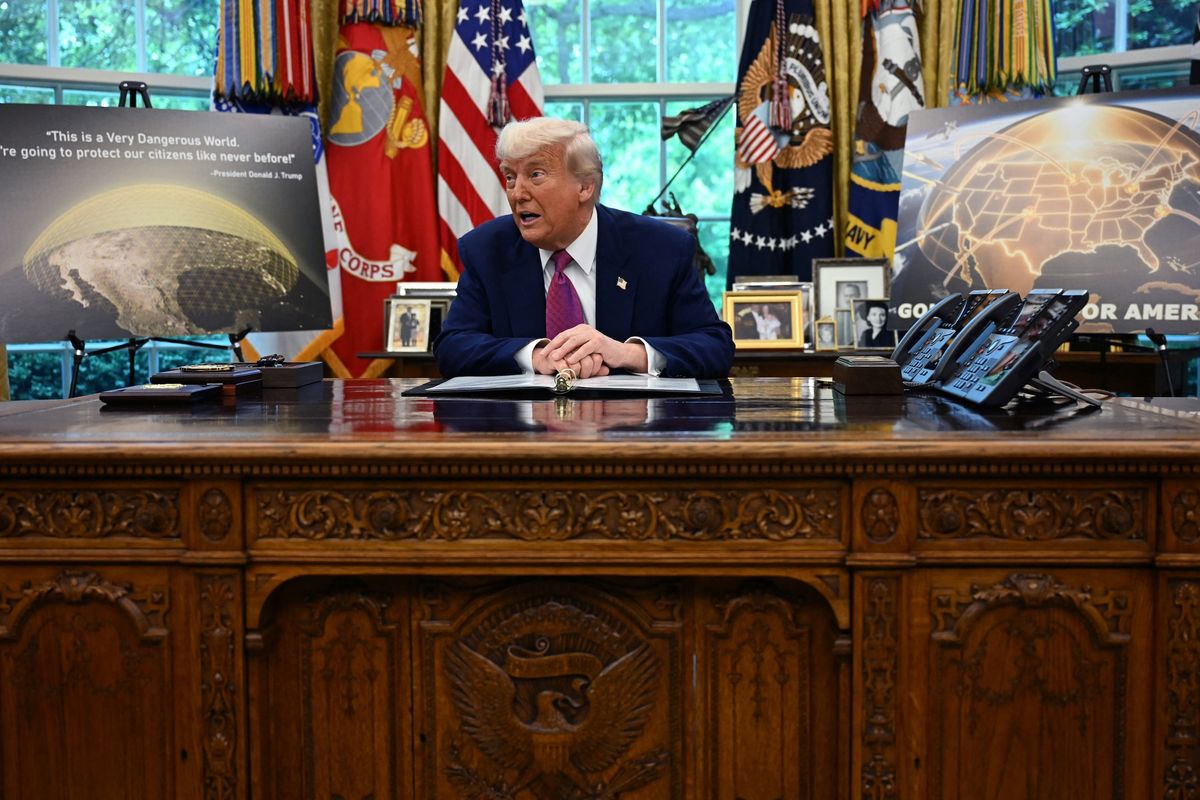President Donald Trump made clear in his inaugural address that his administration was going to pursue an active space program. He said that we are a nation “ready to unlock the mysteries of space.”
For more than a decade, much of America’s space program has stagnated. Human spaceflight has been stuck in low earth orbit for more than 30 years. Robotic deep space exploration has achieved many brilliant successes, but its budgets have been reduced in recent years to find funds for more earth-centric pursuits. Real progress has been made by commercial space companies, who have flown supplies to the International Space Station and built satellites and satellite constellations that impact our daily lives in remarkable ways. Yet our national assets have become more and more vulnerable as our strategic and economic adversaries have invested heavily in an attempt to occupy the high ground of space. Our space investments have not reflected that same level of commitment.
President Trump intends to change all of that. His policies will be aimed at human exploration of the solar system. His policies will make NASA’s prime mission to reach beyond low earth orbit. To do so, he will turn over non-military and intelligence activities in low earth orbit (LEO) exclusively to the commercial sector. He intends to use private-public partnerships to expand the resources available to do space exploration and create space investment. The President’s plans include making access to space more affordable, adding resilience and robustness to our orbital assets so they are not as vulnerable to attack, incentivizing private space stations where industrial work can be done, and increasing government use of commercially available services such as launch. In so doing, Trump space policy will unlock the entrepreneurial spirit for space exploitation and exploration, which has always been a unique American strength.
What Trump policy recognizes is that we are at a different place in space than we were in the 1960s, when our moon program established United States supremacy. Then, we had to rely heavily on the government to invent technologies and create a national imperative for space activity. Much of that investment was made for national security reasons. Today, the national security needs are still relevant, but the reality is that mature technologies are now available which permit government to utilize space services rather than create everything itself. It is that reality into which Trump space policy taps.
The underpinning of this policy is the reinstitution of the National Space Council headed by the Vice President. The council will have the responsibility of looking across space sectors and helping to decide where government exclusivity is necessary, such as in the building of exquisite intelligence satellites, or where government can utilize commercial vendors who can offer similar performance at lower cost.
For example, a recent study showed that for NASA to build the equivalent of the SpaceX Falcon 9 rocket, the costs incurred would be many times the actual cost. Those savings lower the costs of getting to orbit. They also result in innovation, like the successful work being done by two companies, SpaceX and Blue Origin, on recoverable rockets, another major cost saver. The National Space Council can evaluate where national priorities should be set across the whole of the space community and then decide what role government should play in achieving those priorities in civil, commercial, and military space.
The Trump space policy recognizes that we are in intense competition for dominance in an arena that has massive economic and military importance. We must be prepared to defend our national assets on orbit. We must be on the leading edge of technological innovation in space. We must look to space to provide achievements that emphasize our national capabilities, such as returning humans to the moon, first at it and later on it. With that experience, we can go forward to Mars and beyond. We must see space as an incalculable asset to humankind, where we derive benefits here on earth from space-based technologies, and where human and robotic exploration opens avenues to new knowledge.
But Trump’s space policy also recognizes that in order to achieve all we need to do, we must rely upon resources that are greater than just Federal budget allocations. We can tap into the whole of the space economy by utilizing the efficiencies of the commercial market, by creating efficiencies in the government sector as we eliminate waste and redundancy, and by attracting investment from those who see increasing space opportunities.
President Trump made clear in his inaugural address that he intends to be an agent of change. For too long, government space policy has clung to doing things in much the same manner as we did 50 years ago. It is time for a change. The world has changed. Technology has changed. The whole concept of space enterprise has changed. When President Trump said that it is time to look to the future, space policy was a part of his vision.










